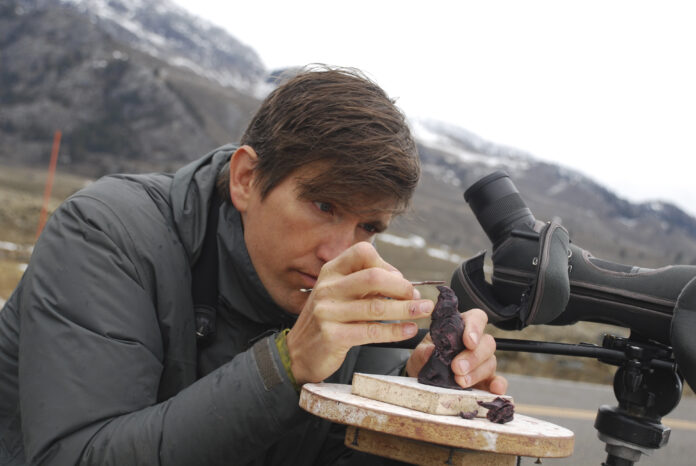Sculpting en plein air allows this Montana artist to capture the spirit of Yellowstone’s wildlife.
Humans are animals. Observing other animals in the wild can offer insight into our distant past, as well as our current motives and behaviors. For plein air sculptor George Bumann, the wild bison, wolves, ravens, grizzlies, elk, and moose that call Yellowstone National Park home are more than just artistic inspiration. They are an important connection to our animal nature.
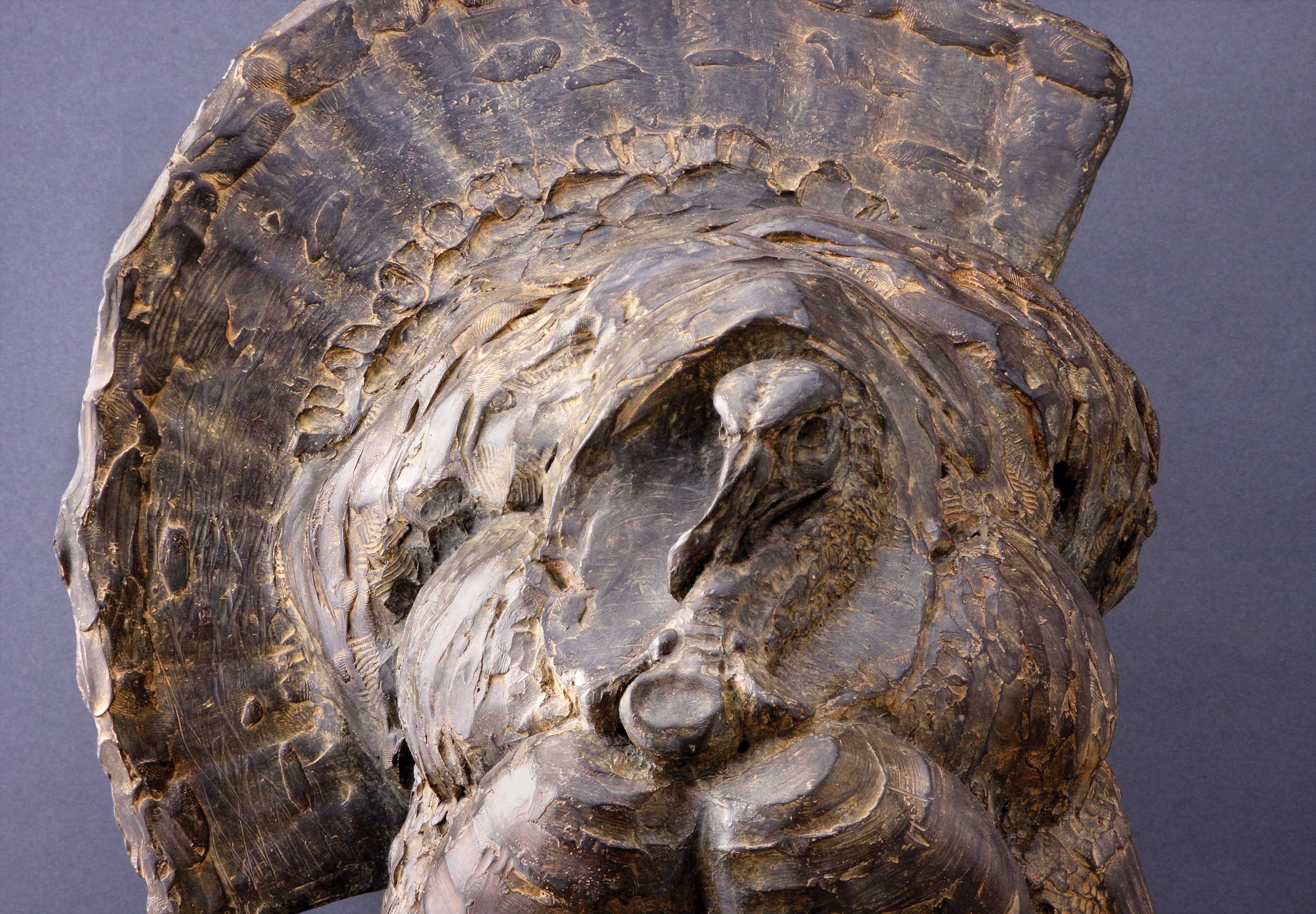
“We can become despondent, disconnected, irritable, and unhealthy from our separation from nature,” says Bumann. “If my work serves any purpose, it is to remind the viewer what we came from and what we still are. Albert Einstein recommended that we study nature. Why? Because it is infinite, beautiful, and almost beyond comprehension. The achievable target for my work is an ever-deepening understanding of what I share this life with. For that reason, even if a piece fails, I have succeeded in living something more genuine. The reason I keep at it — sculpting elk, ravens, bear — is that I am trying to peel back the layers.”
Bumann’s pieces are, without question, representational. But there’s an abstract component to his work — more in the conceptual aspect of his sculptures than in the technical execution of them. “It’s not just an object, but rather an idea that I’m going for,” he says. “I’m after that one thing I can’t get, the thing I can’t put my finger on, something so real and genuine and touching that I can’t stop thinking about it.”
“An abstract is not bound to the limitations of looking like something,” Bumann explains further. “Once that constraint is abandoned, we are left with appreciating form, modeling, and color. It’s all distilled down. I could not stay solely in abstraction, however, because you can’t draw the fullness of what a tree or an animal is in that realm.”
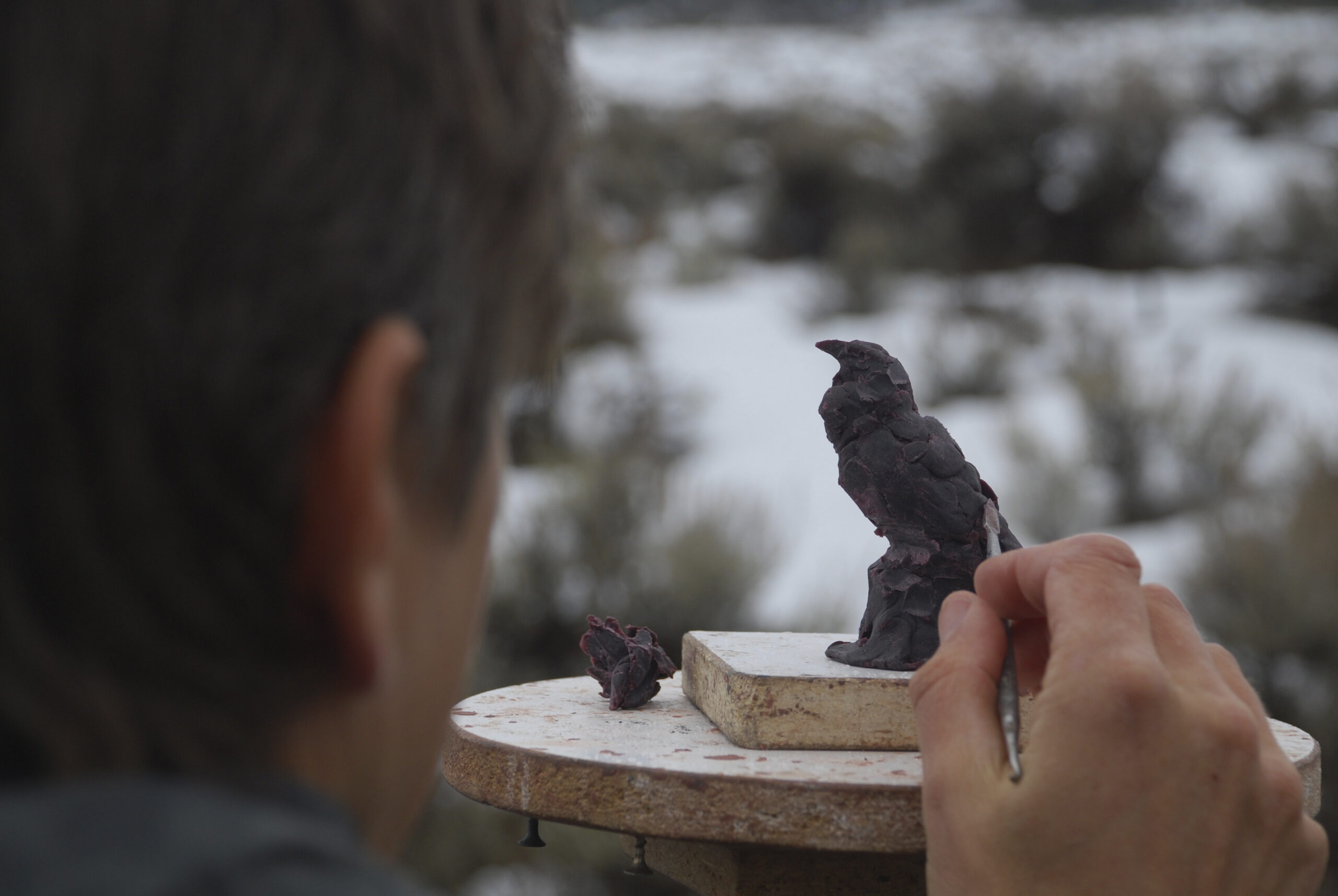
Bumann points out that individual elements of any kind of art stand alone as an abstraction. He cites musical notes as an example; only when the notes are arranged do they become meaningful, à la a piece by “Mozart, Led Zeppelin, or Samuel Barber. It’s the arrangement of elements that makes the connection.” Bumann is in pursuit of an idea, but he doesn’t jettison technique for the sake of expression. “You have to spend a lot of hard-earned time studying the power of light, form, texture, and the like,” he says.
Less than an hour before Bumann made the above statement, he was sculpting a raven that was competing with a coyote for an elk carcass in Yellowstone. The previous day, he had watched a grizzly eat its fill of the carrion. Generally working from a distance, he lessens the chance of disturbing the wildlife he depicts. He looks at his subjects through a spotting scope (field monoculars), often sculpting in purplish pouring wax (which he must keep warm on typically chilly Wyoming days) or plasticine. The artist remembers sculpting one wolf with which he felt a strong bond.
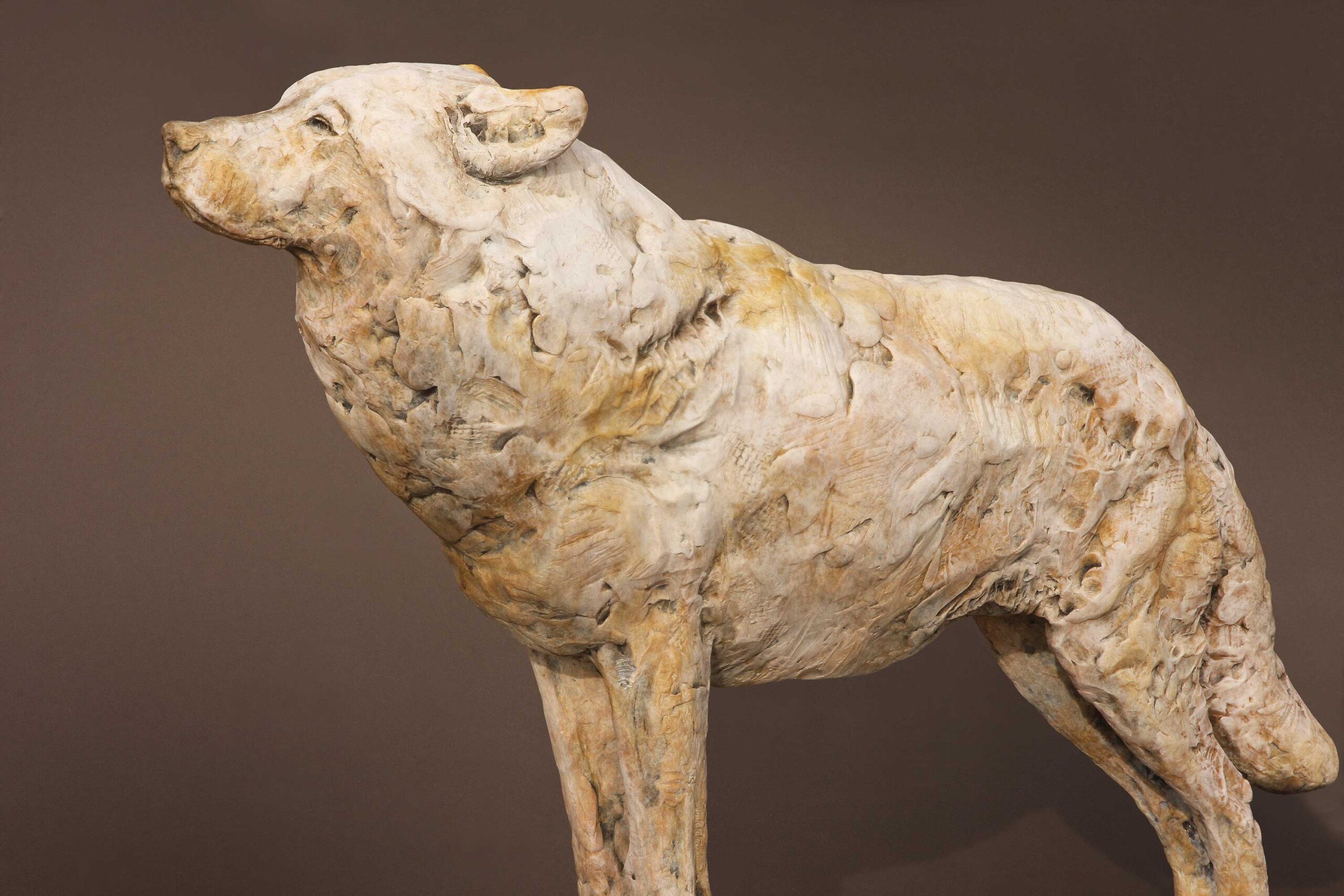
“I knew this wolf her whole life,” Bumann says. “I make a connection, even though I only know them from a distance. I know where they will cross a low-lying area on a seldom-used trail or scent mark on a particular sagebrush. I learn all about them. I saw that mother wolf take down an elk by herself and have it taken away by a bear. We all have those kinds of disappointments in life. So before starting that sculpture, I had my own interpretations of what was going on with her, and the weight of it all on this alpha female. That thought just circulated through my head over and over. I couldn’t get it out of my mind for days. Finally, I did a little study. And then I used the passage of time to home in on the idea as I sometimes do. For one particular sculpture, I let nine years pass before I finished it.”
The artist continues, “Increasingly, I’m letting time be a tool for me. In doing so, I’m holding in mind the end goal, which is not a physical thing for me. It is not a wolf made in bronze. It is more often eternal things, like curiosity, pride, and uncertainty. It’s those timeless, universal elements at play when you open the book that is my sculpture — and you find the things that are in my life. Making art is pulling all components of your life together — faith, upbringing, education, intuition, and the like.
“The thing that holds the greatest power in art is what happens between the painting or sculpture and the viewer. I looked at that wolf study at various times and continued to keep it around at the same time I was discarding so many other wax studies and melting them down. In the end, the changes I made were a matter of millimeters. I pulled the hind legs back about an eighth-inch more. I raised the head and upper body just a little, and pushed the ears back maybe two millimeters. I decided to have the winds of time blowing into her fur to draw the viewer to her eyes, which seemed to show the weight of the world upon her shoulders.”
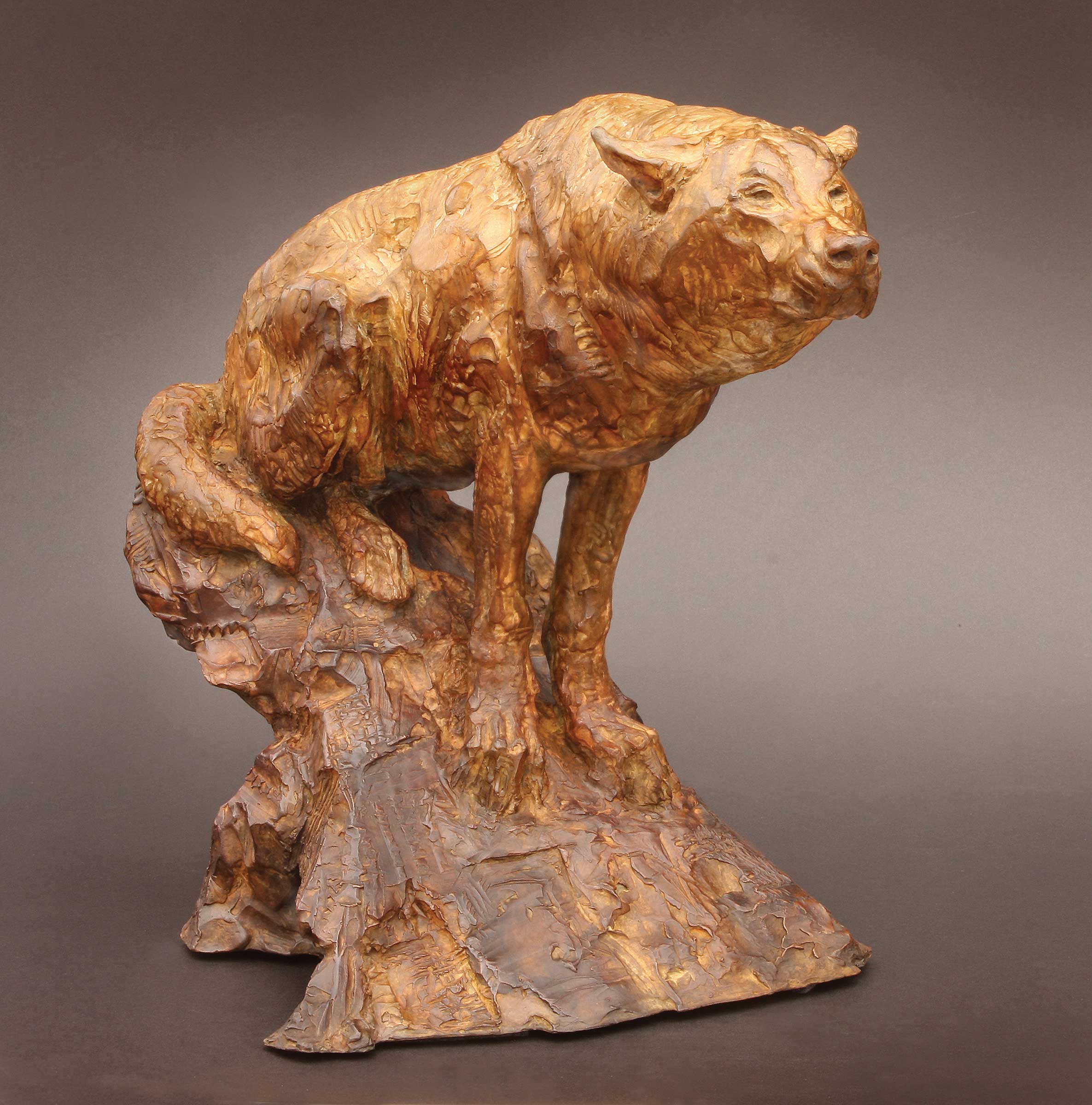
Bumann has skills with the brush and pen, but he favors clay. “I need to squeeze things, I need to squish things,” he says. “Half of sculpting is the tactile feeling of the clay in your hands. Show me a human who doesn’t like to knead his or her own bread dough. It’s a journey of the senses.”
“I think the importance of wild places needs to be more broadly shared,” Bumann said. “Nature is healthful, restorative, and inspirational. We are children of wild nature — being out there makes us more healthy beings. I want to communicate the message of not forgetting our home and where we came from. It’s more important now than ever.
“I put myself in the animal’s place, staying in that moment and nowhere else, and see what gifts can be gleaned. The rest is technical. But if I’m not touched by some element of awe, then I haven’t lived, nor can I speak to something that has that intense vibration of life — a vibration I sense in myself as well. Our species has been wired to be cautious, curious, and excited by things. That gets clouded by materialism and obligations. This is my chance to step away from all that and to share what I feel is of genuine importance for our time.”
***
PleinAir™ magazine is focused on landscape paintings by historical and contemporary artists, art collections, events, and the process of creating plein air paintings. Beautifully designed with rich reproductions on high-quality paper, PleinAir features the top artists and artworks from around the world. Start your subscription here!
And browse more free articles here at OutdoorPainter.com

